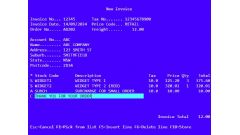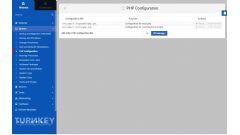Using SqlDataReader NextResult to improve performance
by johna | July 31, 2014 | ASP.NET Web Forms Databases Web Development
On database-driven websites it is commonplace to execute multiple database queries to generate just one page. For example, on the home page of an ecommerce website you might get a list of categories, a list of banner advertisements to display, a list of featured products, and a list of top selling products.
Generally it is common practice in this situation to execute four queries to get this data for display.
I wanted to investigate whether it was more efficient to put these multiple queries into one stored procedure and use the SqlDataReader's Next Result method to get the data all in one go.
My test case was to populate five Repeaters with data.
Test 1 is five different stored procedures and SqlDataReaders.
Test 2 is one stored procedure with the five queries retrieved using the one SqlDataReader and the use of the NextResult method.
What was the result? On average test 2 executed around 40% quicker.
So the conclusion appears to be that thus technique is the way to go, but my testing does not take into consideration all factors (such as any impact due to having the reader open for longer) or what might happen on a very high traffic website.
Have you tried this technique? Please leave a comment with your results.
Generally it is common practice in this situation to execute four queries to get this data for display.
I wanted to investigate whether it was more efficient to put these multiple queries into one stored procedure and use the SqlDataReader's Next Result method to get the data all in one go.
My test case was to populate five Repeaters with data.
Test 1 is five different stored procedures and SqlDataReaders.
using (SqlConnection conn = new SqlConnection(Config.ConnString))
{
conn.Open();
String sql = "stp_Test1";
using (SqlCommand comm = new SqlCommand(sql, conn))
{
comm.CommandType = CommandType.StoredProcedure;
using (SqlDataReader reader = comm.ExecuteReader())
{
Repeater1.DataSource = reader;
Repeater1.DataBind();
}
}
sql = "stp_Test2";
using (SqlCommand comm = new SqlCommand(sql, conn))
{
comm.CommandType = CommandType.StoredProcedure;
using (SqlDataReader reader = comm.ExecuteReader())
{
Repeater2.DataSource = reader;
Repeater2.DataBind();
}
}
sql = "stp_Test3";
using (SqlCommand comm = new SqlCommand(sql, conn))
{
comm.CommandType = CommandType.StoredProcedure;
using (SqlDataReader reader = comm.ExecuteReader())
{
Repeater3.DataSource = reader;
Repeater3.DataBind();
}
}
sql = "stp_Test4";
using (SqlCommand comm = new SqlCommand(sql, conn))
{
comm.CommandType = CommandType.StoredProcedure;
using (SqlDataReader reader = comm.ExecuteReader())
{
Repeater4.DataSource = reader;
Repeater4.DataBind();
}
}
sql = "stp_Test5";
using (SqlCommand comm = new SqlCommand(sql, conn))
{
comm.CommandType = CommandType.StoredProcedure;
using (SqlDataReader reader = comm.ExecuteReader())
{
Repeater5.DataSource = reader;
Repeater5.DataBind();
}
}
}
Test 2 is one stored procedure with the five queries retrieved using the one SqlDataReader and the use of the NextResult method.
using (SqlConnection conn = new SqlConnection(Config.ConnString))
{
conn.Open();
String sql = "stp_Test";
using (SqlCommand comm = new SqlCommand(sql, conn))
{
comm.CommandType = CommandType.StoredProcedure;
using (SqlDataReader reader = comm.ExecuteReader())
{
Repeater1.DataSource = reader;
Repeater1.DataBind();
reader.NextResult();
Repeater2.DataSource = reader;
Repeater2.DataBind();
reader.NextResult();
Repeater3.DataSource = reader;
Repeater3.DataBind();
reader.NextResult();
Repeater4.DataSource = reader;
Repeater4.DataBind();
reader.NextResult();
Repeater5.DataSource = reader;
Repeater5.DataBind();
}
}
}
What was the result? On average test 2 executed around 40% quicker.
So the conclusion appears to be that thus technique is the way to go, but my testing does not take into consideration all factors (such as any impact due to having the reader open for longer) or what might happen on a very high traffic website.
Have you tried this technique? Please leave a comment with your results.
Related Posts
Another pointless project - the programmable digital watch
by johna | January 20, 2025
I've come up with yet another pointless project. Would you like a watch that you could program yourself - but not a "smart watch"?
Converting dBase IV programs to run in the browser
by johna | September 13, 2024
Some pointless entertainment trying to get some old dBase programs running in the browser.
How to set up a debugging using the Turnkey Linux LAMP stack and VS Code
by johna | December 19, 2023
The second part in my guide to setting up a website and database using the Turnkey Linux LAMP stack.




Comments
There are no comments yet. Be the first to leave a comment!